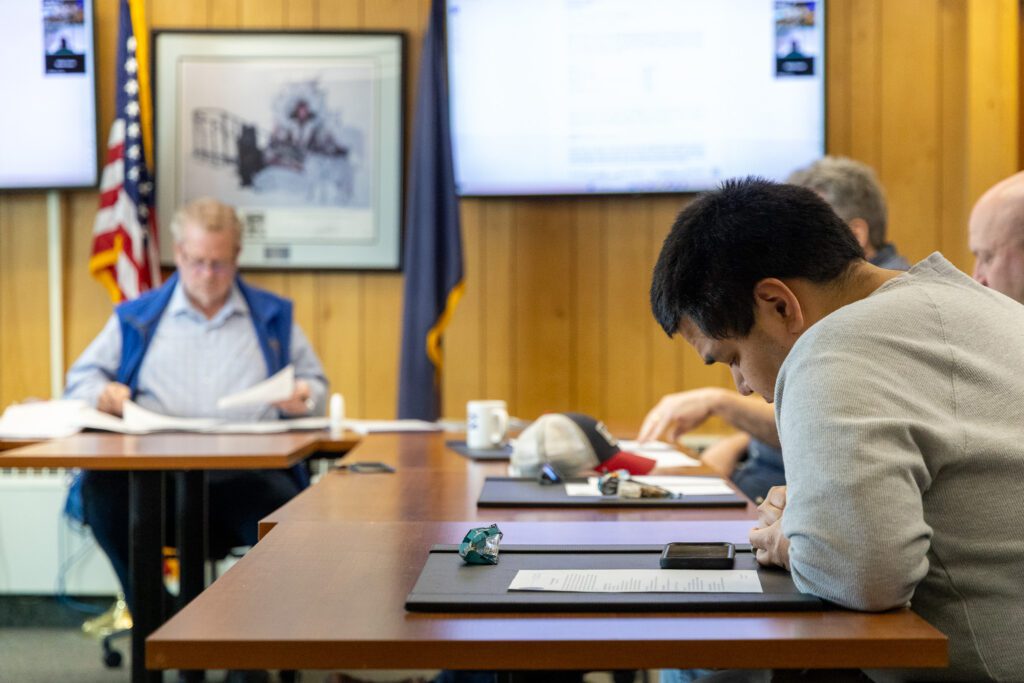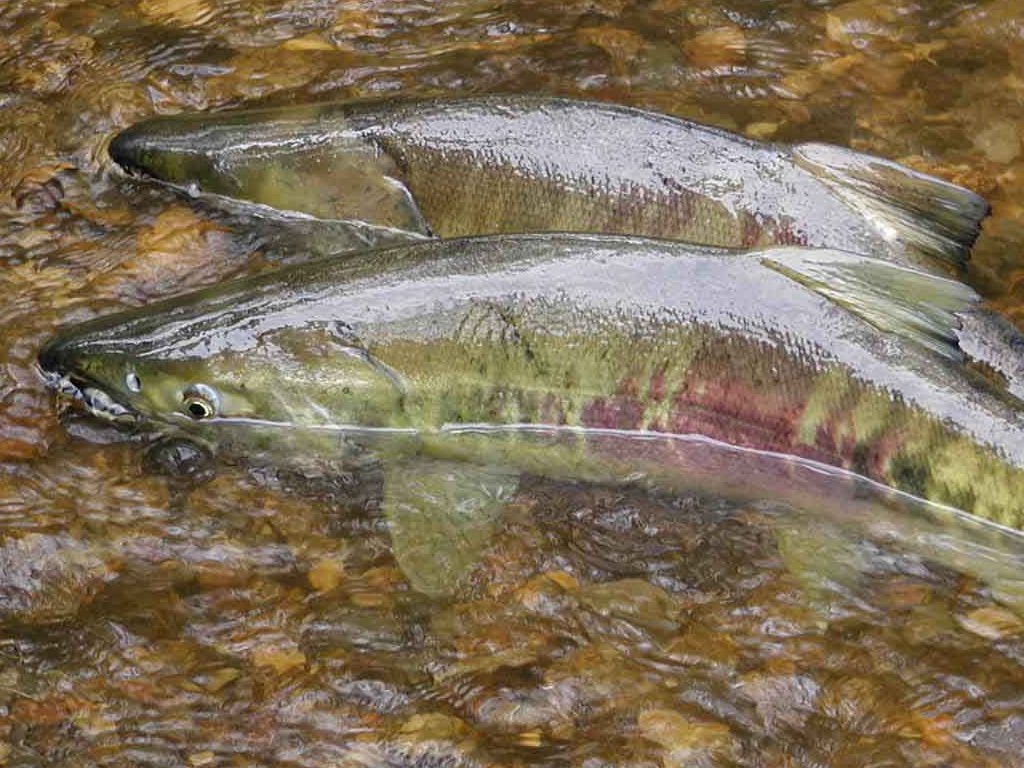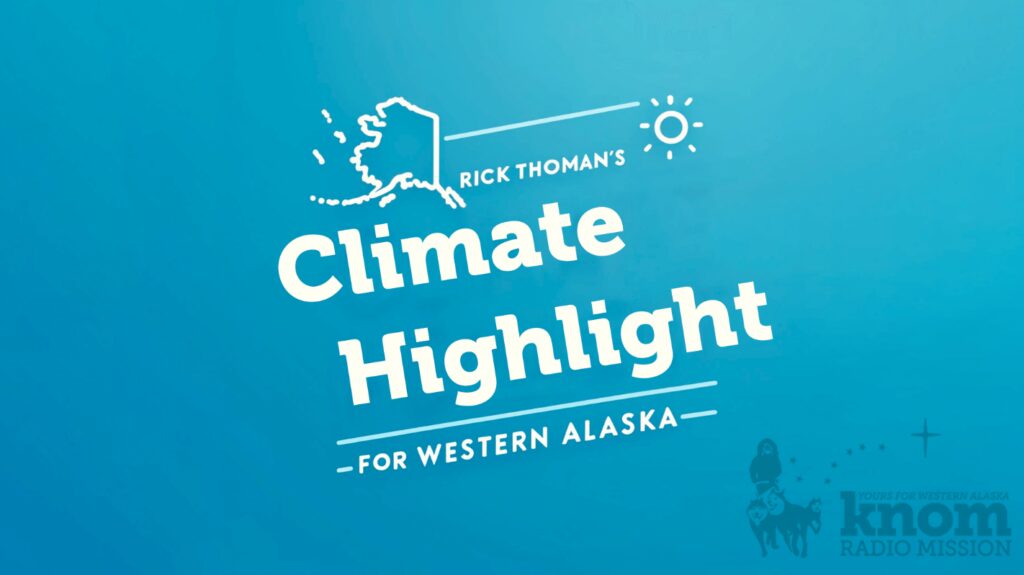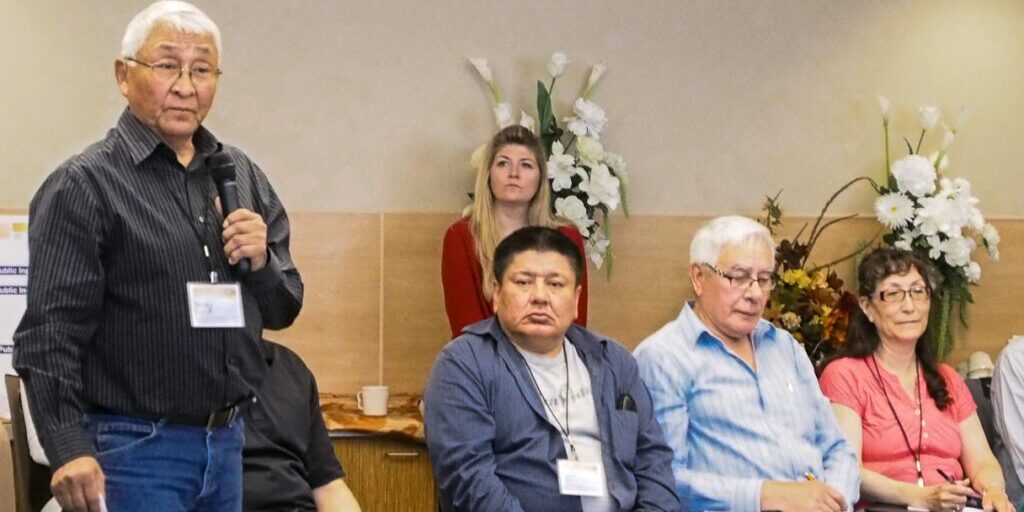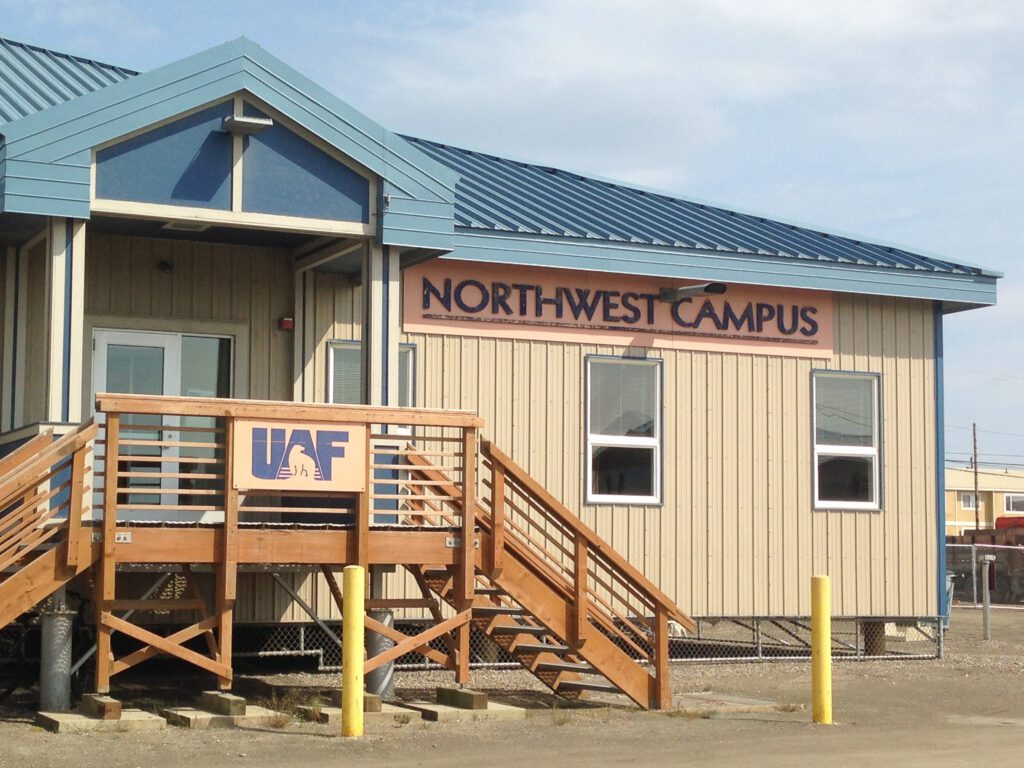How are small native communities in rural Alaska to balance traditional lifestyles with the pressures of modernization? That was the question community leaders focused on during the second day of discussions on the proposed road to the Ambler Mining District.
For nearly five hours in a conference room at the Nullagvik Hotel, representatives—many of them elders—from communities in the Kobuk Valley, Koyukuk River, and elsewhere shared their thoughts.
“I think we ought to seriously look at what we’re doing right now. Because we need a cash economy to support our way of life,” said Larry Westlake of Kiana. “I don’t think we could go back to where we started from.”
Like many others yesterday, Westlake shared his personal history before offering thoughts on how people in the Northwest Arctic and Interior regions need to engage with development projects like the Ambler industrial road.

The session was scheduled to be a two-and-a-half hour dialogue between community members and state officials. But speakers chose to deviate from the plan, passing the microphone all the way around a large circle of 38, each person getting her or his chance to talk.
“For too long we’ve been planned for. It’s time that we turn things around to where we plan our destiny–the future of our children, and our grandchildren,” said Walter Sampson, who lives in Kotzebue and spent decades working for NANA Regional Corporation. Like others, he used the road as a proxy for a larger conversation about how to affect change. “Quit reacting. Become proactive in designing those things, so you can maximize the benefits that you can get from those plans.”
Many referenced the need to prepare new opportunities, citing Red Dog Mine—and the AIDEA owned road connected to it—as a template for bringing the benefits of industrial mining back to shareholders.
The session also saw plenty of praise for AIDEA and their contractor Dowl HKM, who organized and paid for Wednesday and Thursday’s meetings. Karsten Rodvik is in charge of external affairs for AIDEA, and thought Thursday’s session was a resounding success.
“Clearly there’s a recognition–for the sake of future generations–that responsible development of Alaska’s natural resources needs to occur today,” Rodvik said. “I’m very pleased with the level of support that was expressed here today for this project, and for the process going forward.”

But some in attendance were unsure of what exactly had been accomplished. No decisions were made, and few questions about serious selling points for the project—like the promise of jobs, lower cost of living, and revenues—were answered.
“I think this is definitely a starting point, and I think there’s definitely some conversation going on, but I don’t think it’s anywhere near the full conversation that should happen. There’s many people that are not here at the table today that should be,” said Jill Yordy, an environmental advocate who has followed the project closely for the Northern Alaska Environmental Center in Fairbanks, and has been to several meetings.
Yordy believes that while relationship building is important, decisions about fundamental features of the project keep getting deferred.
“AIDEA hasn’t really been clear on what role these meetings are playing and how they’re taking the information that people bring into account, how they’re making those decisions.”

AIDEA says that many of those specific decisions can’t be considered until after the Environmental Impact Statement has collected all the pertinent information. Mark Davis is a deputy director with the agency and says the upcoming EIS will set the stage for evaluating everything from subsistence impacts to stress-testing financial models.
“[A] business plan would come after the EIS process,” Davis explained. “And then you’d make sure that that business model could survive changes in the business environment–say a downturn in the price of copper, for example. And you’d make that decision then to determine whether the road would be viable, given the size of those mines.”
But there are those who want local conditions put into writing before plans for the road go any further.
“If anything is gonna to be beneficial for my people, there have to be memorandums of agreement before anything is really starting off. Because [the] EIS is gonna be fast—before we know it it’s gonna be over. And by that time things may change,” said Virginia Comack of Ambler.
Those memorandums, or the requests they might protect, were not discussed in any detail. During both days of meetings there were times when it felt like two distinct conversations were going on in the same conference room. Leaders from the Kobuk and Koyukuk River communities shared their personal perspectives how they might not just survive, but thrive. Representatives from the state listened, and in their turn explained procedural steps and timelines for a template they say has worked before, and will here.
Editor’s Note: After a version of this story played on Alaska Public Radio Network’s Alaska News Nightly, Patricia Sivu Faye-Brazel, who works for the Native Village of Ambler as a planner and technical advisor for negotiations, contacted KNOM, saying: “The Communities of Ambler, Kobuk, Allakaket, Allatna, Bettles, and Evansville expressed alarm at the way the meeting was portrayed in this story, in particular with the line ‘Leaders from the Kobuk and Koyukuk River communities shared their personal perspectives how they might not just survive, but thrive.’ There was no actual approval or agreement. And the tribes, while they are invited to public meetings, do not feel they are being consulted, as is their right, as sovereign tribal governments.”

